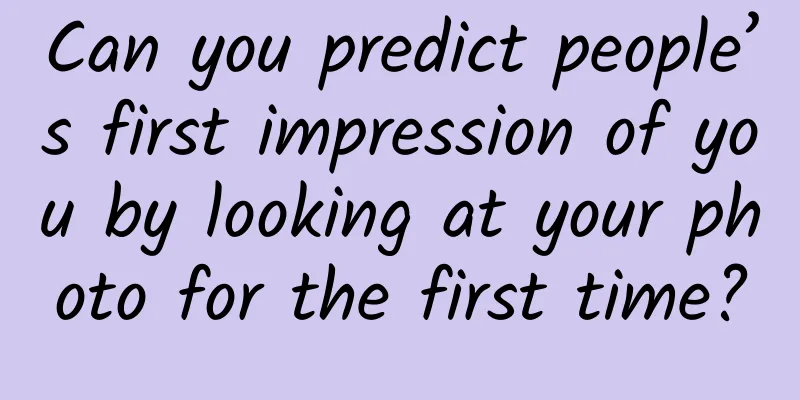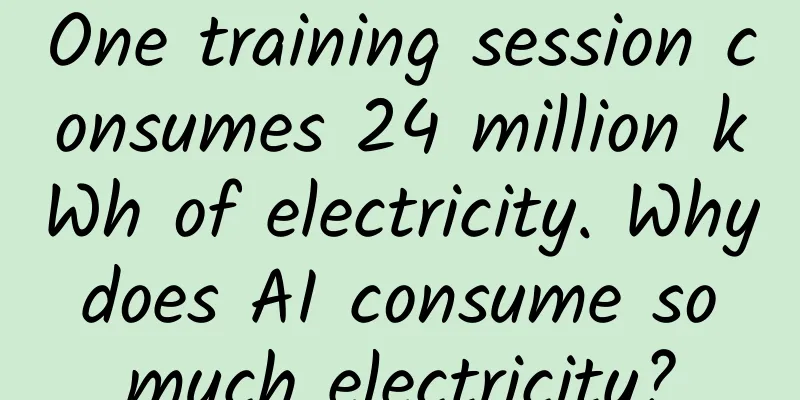Can you predict people’s first impression of you by looking at your photo for the first time?

|
This article comes from: Big Data Digest Everyone in the world is obsessed with appearance. Psychologist Frett said that judging people by their appearance is a human instinct, which may be the result of long-term natural evolutionary selection. Because the human brain always chooses the way of thinking that requires the least thinking. Therefore, people tend to judge a person by appearance (ability, knowledge, identity, status, personality traits). From the perspective of genetics and evolutionary psychology, "judging people by appearance" is likely to be an evolutionary defect of humans. This flaw shows that there is really a reason why "beauty is justice". These first impressions, though often inaccurate, can be extremely powerful, shaping our relationships and the way we conduct our lives, from job interviews to court trials. However, AI has also learned the ability to judge a person's popularity based on their appearance. Researchers at Stevens Institute of Technology, in collaboration with Princeton University and the University of Chicago, have now taught an artificial intelligence algorithm to model first impressions and accurately predict how people will view photos of other people's faces. The work was published in the April 21 issue of the Proceedings of the National Academy of Sciences. Paper link: https://www.pnas.org/doi/full/10.1073/pnas.2115228119 AI models reflect human stereotypes: People wearing glasses are smarter “There’s a lot of research going on right now focused on modeling the physical appearance of the face,” said Jordan W. Suchow, a cognitive scientist and artificial intelligence expert at the School of Business at Stevens. “We combined human judgment and machine learning to study the biased first impressions people have of each other.” Suchow and his team, including Joshua Peterson and Thomas Griffiths of Princeton University, and Stefan Uddenberg and Alex Todorov of the University of Chicago Booth School of Business, are leading the charge. They collected thousands of people's first impressions of more than 1,000 computer-generated photos of faces and ranked them based on criteria such as IQ, electability, religious beliefs, trustworthiness or extroversion of the subjects. Those responses were then used to train a neural network to make similar snap judgments about people based solely on photos of their faces. With this AI model, it is possible to "give you a picture of your face, and we can use this algorithm to predict people's first impressions of you and what stereotypes they will project onto you when they see your face," Suchow explained. Many of the algorithm’s findings align with common intuitions or cultural assumptions: People who smile tend to be seen as more trustworthy, for example, while people who wear glasses are often seen as more intelligent. Some features are difficult to understand It is easy to understand that smiling people are more trustworthy and people wearing glasses are smarter. However, in other cases, it is a bit difficult to accurately understand why the algorithm assigns certain characteristics to a certain person. In other words, although the model is trained based on human judgment, most of the mechanisms are still "black boxes." “The algorithm doesn’t provide targeted feedback or explain why a given image elicited a particular judgment,” Suchow said. “But even so, it can help us understand how others see us — we can rank a series of photos based on which one makes you look most trustworthy, for example, allowing you to choose how to present yourself.” Although originally developed to help psychology researchers generate images of faces for use in perception and social cognition experiments, the new algorithm could have real-world applications. Modern people carefully curate their public images, for example, sharing only photos that they think make them look smartest, most confident or most attractive, and it’s easy to see how algorithms could be used to support this process, Suchow said. Because there's already a social norm around presenting yourself in a positive light, it begs some of the ethical questions surrounding the technology, he added. Even more troubling, the algorithm can also be used to manipulate photos to make subjects appear in a particular way — perhaps making a political candidate seem more trustworthy or their opponents seem unintelligent or suspicious. While AI tools have already been used to create “deepfake” videos showing events that never happened, new algorithms can subtly alter real images in order to manipulate viewers’ perceptions of the people in them. "With this technology, we can take a photo and then create a modified version in order to give the impression of a certain thing," Suchow said. "For obvious reasons, we need to be cautious about how this technology is used." To protect their technology, the research team obtained a patent and is now creating a startup to license the algorithm for pre-approved ethical purposes. “We are taking every possible step to ensure that this cannot be used to cause harm,” Suchow said. While the current algorithm only looks at the average reaction of a large group of viewers to a given face, Suchow next hopes to develop an algorithm that can predict how one person will react to another person's face. This could provide a deeper understanding of how snap judgments affect our social interactions and could potentially help people recognize and go beyond their first impressions when making important decisions. “It’s important to remember that the judgments we’re modeling don’t reveal a person’s true personality or abilities,” Suchow explained. “What we’re doing here is studying people’s stereotypes, and that’s something we should all be working to better understand.” Related reports: https://www.pnas.org/doi/full/10.1073/pnas.2115228119 https://www.sciencedaily.com/releases/2022/04/220421181212.htm Academic headlines |
<<: How do stealth aircraft become invisible?
>>: Don’t throw away used masks, you can mix them with cement to build a building!
Recommend
2020 Information Feed Advertising Optimization Guide!
A few days ago, I received messages from many fri...
Barrage module
Source code introduction: sliding channel selecti...
The copy targeting is the same, why is the CTR still lower than others?
The copywriting is obviously very well written, s...
Brand marketing strategy leveraging festival hot spots!
There are many festivals in these two months, inc...
Is white pollution difficult to solve? Try this "living" plastic!
Produced by: Science Popularization China Author:...
How much does it cost to be an agent of a supplement mini program in Weifang?
How much does it cost to be an agent for a supple...
Learn the most comprehensive guide to snow disaster prevention in one article to save yourself at critical moments
Snow is generally romantic and harmless, but it c...
Moutai is angry about the drastic price cuts on e-commerce platforms during Double 11
The battle between traditional wine companies and...
How can a fruit shop create a WeChat mini program? How much does the fruit shop WeChat mini program cost?
How can a fruit shop create a WeChat mini program...
The vain flamingo actually raised its babies to the point of vomiting blood?
The national emblem of the Bahamas is a shield, w...
The electromagnetic guns in the movie are used to fight aliens, while our electromagnetic guns are used to put out fires.
There was a scene like this in the movie "Tr...
The first pee in the morning may be your body's cry for help! Don't ignore these signals
The first urine you take every morning may have m...
Why does marketing to women so often fail?
Since entering the 21st century, the rise of fema...
ARM: 2017 Global Artificial Intelligence Awareness and Acceptance Survey Report
199IT original compilation Artificial Intelligenc...
What are the advantages of developing a mini program for a chain convenience store?
The rapid development of the Internet in recent y...




![Pan Ya Pan Pan Photography Tutorial 2020 [Good quality only video]](/upload/images/67cc044417e38.webp)




